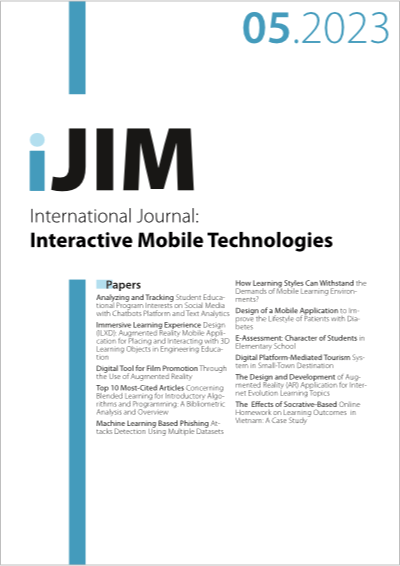Machine Learning Based Phishing Attacks Detection Using Multiple Datasets
DOI:
https://doi.org/10.3991/ijim.v17i05.37575Keywords:
Phishing attack, phishing attack detection, Cybersecurity, Machine Learning, Web securityAbstract
Nowadays, individuals and organizations are increasingly targeted by phishing attacks, so an accurate phishing detection system is required. Therefore, many phishing detection techniques have been proposed as well as phishing datasets have been collected. In this paper, three datasets have been used to train and test machine learning classifiers. The datasets have been archived by Phish-Tank and UCI Machine Learning Repository. Furthermore, Information Gain algorithm have been used for features reduction and selection purpose. In addition, six machine learning classifiers have been evaluated, namely NaiveBayes, ANN, DecisionStump, KNN, J48 and RandomForest. However, the classifiers have been trained and tested over the three datasets in two stages. The first stage is using all features included in each dataset while the second stage using selected features by IG algorithm. At the first stage RandomForest classifier has shown the best performance over Dataset-1 and Dataset-2, while J48 has shown the best performance over Dataset-3. On the other hand, after features selection, the RandomForest classifier was the superior among the other five classifiers over Dataset-1 and Dataset-2 with accuracy of 98% and 93.66% respectively. While ANN classifier has shown the best performance with accuracy of 88.92% over Dataset-3. Because of the few number of instances as well as features in Dataset-3 comparing to the other two dataset; the performance of the classifiers has been affected.
Downloads
Published
How to Cite
Issue
Section
License
Copyright (c) 2023 Ashraf Hamdan Aljammal

This work is licensed under a Creative Commons Attribution 4.0 International License.


